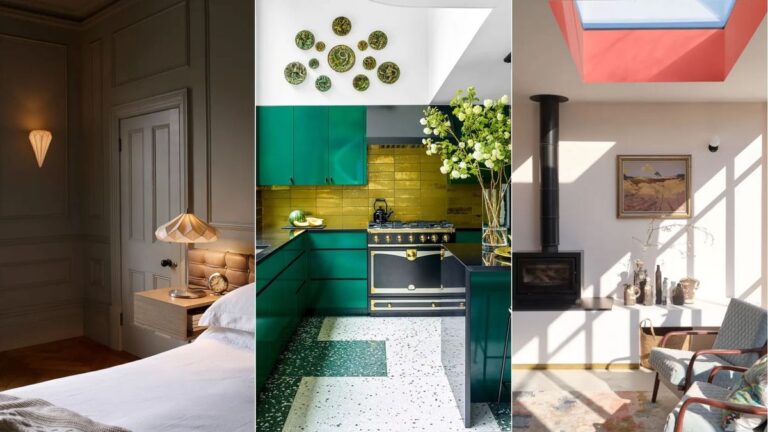Home décor is about more than just aesthetic appeal: considering how the design of our home contributes to our overall well-being has never been more important than it is today.
Carefully considering your home décor through colour schemes, lighting ideas and more can work wonders in creating a positive atmosphere, from an uplifting living room to a relaxing and calming bedroom.
There are plenty of well-known decorating ideas that foster a health-promoting environment — think natural materials and soothing colors — but it's not always easy to know which decorating ideas might have the opposite effect and negatively impact the health of your home.
5 home decor mistakes that can affect your health
We asked designers to share the most common interior design mistakes that could affect your health, and we've compiled them below for you to consider.
1. Chasing trends too much
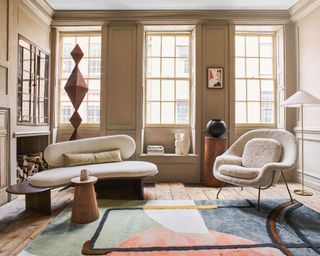
(Image provided by ONE REPRESENTS LTD (JAKE CURTIS))
Sure, it can be tempting to get carried away with the latest interior design trends. They can be a great source of inspiration for creating a stylish space, but following too many trends can be counterproductive. Not only is it impractical to constantly change your décor to keep up with trends, but it can also prevent you from feeling truly relaxed in your home. Without a personal touch, your space will never feel cozy.
“The biggest mistake people make with interior design motifs is getting so focused on having a home that looks like that perfect Pinterest vision or trending TikTok video that they forget they actually need to live in it,” says interior designer Cathy Kuo. “First and foremost, a home needs to be comfortable and practical. There are lots of ways to make a space beautiful, but it needs to meet your daily needs first. If you feel like you're living in a museum, it's definitely going to have a negative impact on your health because you're not going to be able to fully relax and unwind.”

Cathy Kuo is a renowned interior designer and international leading authority on home and lifestyle design. She has over 20 years of experience in the design industry.
Instead of following trends, you should tailor your home decorating process to your needs and make it as personal as possible. You want to design a home that is uniquely yours.
Sarah Barnard, interior designer and founder of wellness-led design studio Sarah Barnard Design, explains: “When making design decisions for your home, it's important to prioritize your personal needs. Choosing a 'one size fits all' approach to interior design can have a negative impact on your health because it doesn't consider yourself and what you need to live your best life. Instead, take the time to honestly think about how you utilize your space, how you move around your home, and your daily habits to determine a custom design that supports your personal needs.”
2. Poor lighting
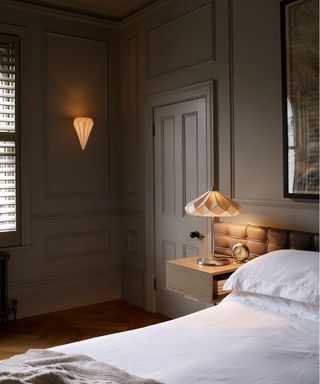
(Image credit: Original BTC)
Lighting plays a key role in setting the mood of a room. Too much light can make you feel unrelaxed, while not enough light can make a room feel uncomfortable. Cinzia Moretti, creative director at Moretti Interior Design, points out these are some of the most common decor mistakes:
“One of the first home decor mistakes I see is bad lighting. People underestimate the importance of lighting in human psychology. Limited light sources can make a room feel unwelcoming and dramatically change your mood. Proper lighting improves your mood, stabilizes your circadian rhythm, and helps reduce depression. Every home needs a good source of lighting, whether natural or artificial.”
But what exactly is the right lighting to promote health? There are many things to consider, and it's highly space-dependent and can vary from room to room. But the two most important factors in choosing the right lighting are brightness and warmth levels.
“Harsh lighting is a surefire way to ruin an atmosphere,” explains interior designer Nicole Lanteri. “Lighting should be fun and functional, not an approach that's limited by outdated or limiting thinking like not wanting sconces or visible cords. The right combination of bulbs and lighting options (and definitely not just overhead lighting!) will result in a comfortable home that you can adjust to suit your needs.”

Nicole Lanteri founded her Washington DC based interior design firm in 2009. Nicole Lanteri Design works on projects throughout the DC, Virginia and Maryland surrounding areas as well as further afield, including New York City, the Hudson Valley and Southern California.
David Samuel Ko, Los Angeles-based interior designer and founder of Maison Co, adds that lighting color is also important to consider: “Most homes are switching to LED lighting, but they're opting for light colors that are too white and inorganic. This can make a space feel uncomfortable and harsh, and if it's too bright, it can even cause headaches. But this is easily fixed: just switch your LED lighting color to a warm white instead of a cool one.”
To quickly fix this common decorating mistake, buy some warm white LED light bulbs from Amazon to create a softer ambiance throughout your home.
3. Unbalanced color schemes
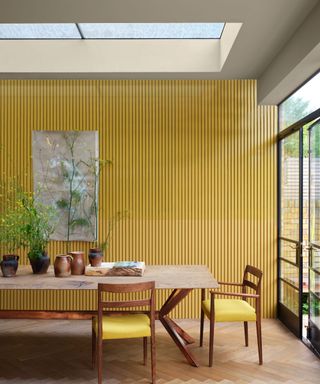
(Image courtesy of Farrow & Ball)
Colour is another important decor choice that can greatly impact the mood of a space. It's psychologically proven that the use of colour throughout the home can promote different moods, both positive and negative, so it's important to be aware of these before incorporating colour into your paint ideas.
“Unbalanced color choices can make a space feel disharmonious,” explains Nicole Lanteri. “Literally, a room with too much gray can make it feel cold, and a room with too much yellow can make it feel hot. The right balance of colors can create an inviting, comfortable space that promotes emotional stability.”
But apart from the specific colours you choose, you should also consider how many colours are included in your colour scheme. According to Cinzia Moretti, too many colours can be detrimental to your health, a theory she explains below.
“Another common mistake is thinking that using color means adding three or more colors to a room. Combinations of more than three colors can be rather confusing, as the brain doesn't have a break when looking around. Color has a huge impact on our health and mood, but it needs to be used correctly and we should aim to achieve visual balance.”
“My suggestion when incorporating color into your interiors is to apply the 60-30-10 rule, which I find extremely helpful: Pick the main color you want to incorporate into the room – a shade that has meaning to you. It will take up 60% of your large surfaces and help establish the overall feel of your design. Then pick a secondary color that supports the first color, which will take up 30% of the room. The final 10% is an accent color, which will help highlight certain elements of your design. The same rule can be applied when decorating with patterns.”
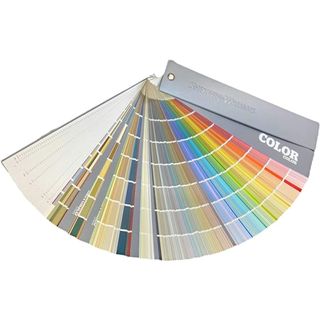
sherwin williams color correction deck
Not sure where to start choosing a color for your interior? Compare shades with the Sherwin-Williams Color Deck to find your perfect match.
4. Cluttered Environment
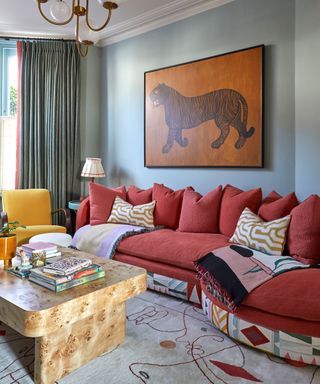
(Image courtesy of Studio Duggan // Photography Sarah Griggs)
Avoiding clutter may seem like an obvious step to creating a space that promotes well-being: Most people prefer a space that's uncluttered and free of excess clutter, but taking great care to limit the number of objects on display won't just help for aesthetic reasons, it will also affect how calming a space feels.
If you're naturally drawn to minimalist interiors, this probably isn't a decorating mistake you're making. But for those who like more playful, layered maximalist decor, your space can quickly become filled with ornaments, trinkets, and keepsakes, which can end up making the space feel crowded. While you can still embrace a vibrant aesthetic through color, prints, and furniture style, consider keeping some negative space and clutter-free surfaces to promote wellness and encourage a sense of calm.
5. Too much sunlight

(Image courtesy of Farrow & Ball)
Is it possible to have too much natural light in your home? It may sound ironic, but natural light can be detrimental to some spaces, and too much brightness can affect your comfort. This is especially true if you're working at a screen in a brightly lit room, which can often make it difficult to concentrate.
“Failing to control sunlight through the use of blinds or curtains can result in excessive glare and heat, which not only impacts visual comfort and your ability to effectively regulate indoor temperature, but can also cause fading of valuable furniture and rugs,” explains interior designer Katie Curtis.

Kati Curtis is the founder of Kati Curtis Design, a New York City based design firm specializing in classic design with global influence. Kati founded the studio in 2005 after working for international architecture and engineering firms for 12 years.
This also applies to your bedroom. Depending on your preferences, too much bright light could affect your sleep. David Samuel Ko explains: “Keep your curtains in mind as well and consider your preferences before buying. If you need complete blackout while you sleep, also consider where the light will leak in. If even a little bit of light leaks in, you might regret your choice. So, if you need complete blackout, staple the sides of your curtains and add a cornice box to ensure no light gets in at all.”
Ultimately, your home decor choices are your own personal choice and should match what makes you feel good. But in general, these five points are common mistakes that are known to have negative health effects, so it's worth keeping them in mind for your next home decor project.


